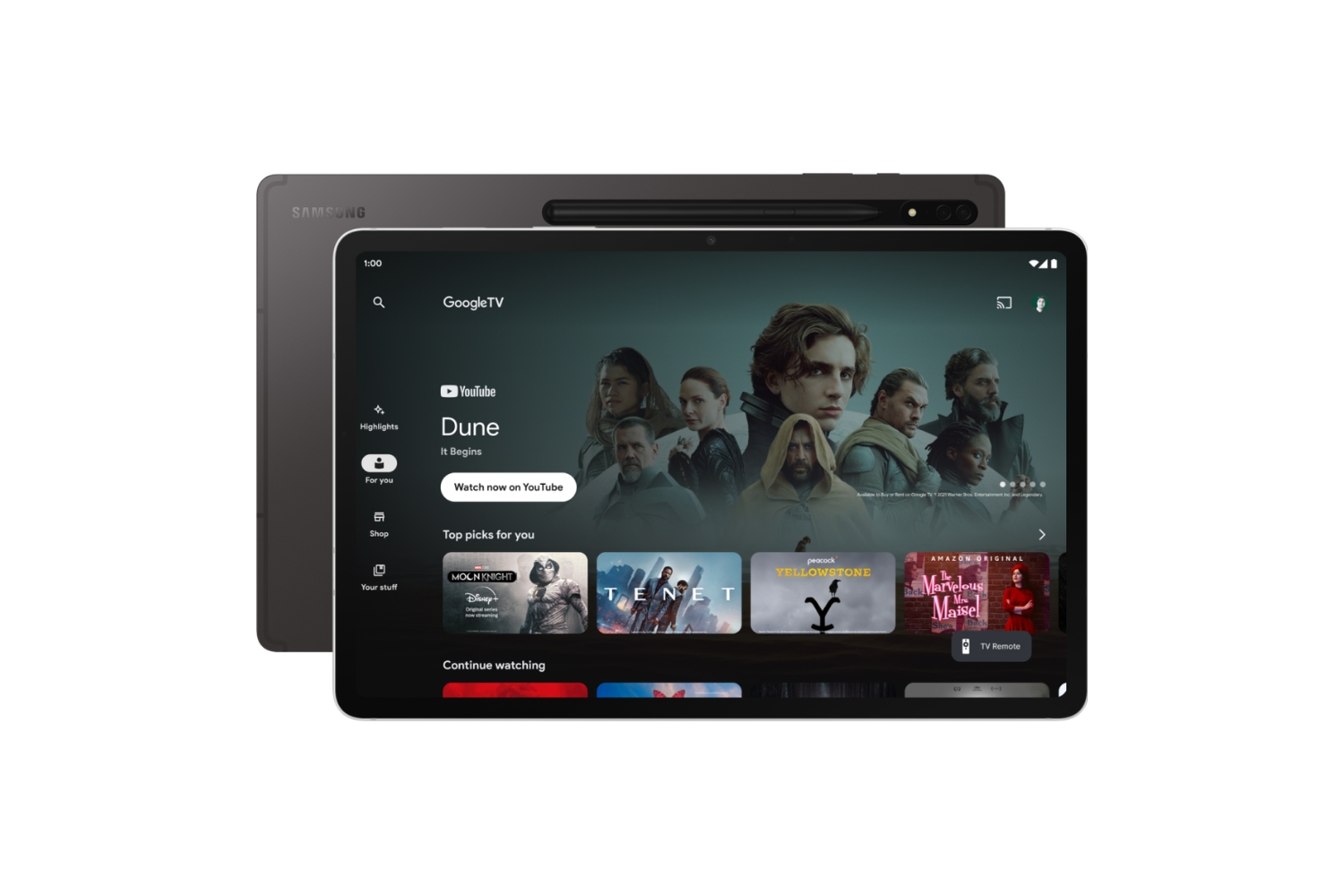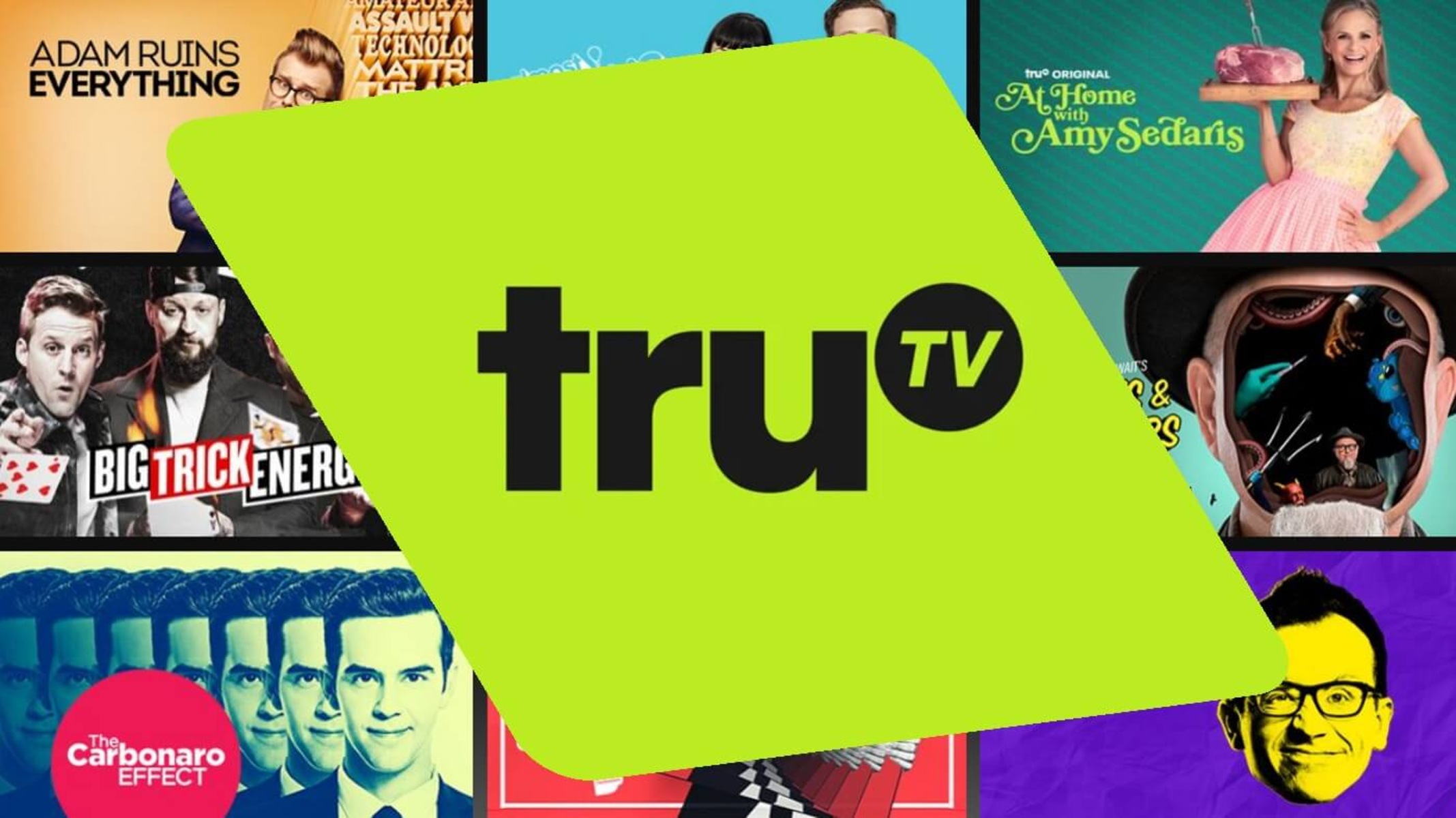Introduction
Welcome to the age of limitless entertainment, where you can watch your favorite movies, TV shows, and videos anytime and anywhere. With the rise of streaming services, you no longer have to rely on traditional TV channels or physical media to satisfy your entertainment cravings. However, accessing these streaming platforms while traveling or residing in certain regions can be a challenge due to geo-restrictions. But fear not – there are ways to watch everything everywhere.
In this guide, we will explore various techniques and tools that will enable you to bypass geo-blocks and enjoy your favorite content no matter where you are. From using VPNs and smart DNS proxies to browser extensions and media streamers, we have got you covered. Whether you are a digital nomad, a frequent traveler, or simply desire access to a wider range of content, these methods will empower you to stream your favorite shows and movies from anywhere in the world.
Before we dive into the nitty-gritty, it is important to note that while the methods outlined in this guide are effective, they may come with certain limitations such as subscription costs, data usage, or technical requirements. Additionally, it is crucial to respect the terms and conditions of the streaming services you use and adhere to copyright laws in order to enjoy content responsibly.
Now, without further ado, let’s explore the steps you can take to unlock a world of entertainment and watch everything everywhere.
Step 1: Choose the Right Streaming Services
The first step in watching everything everywhere is to select the streaming services that align with your interests and preferences. There is a wide range of streaming platforms available, each offering a unique collection of movies, TV shows, documentaries, and more. By choosing the right streaming services, you can ensure that you have access to a diverse range of content at your fingertips.
Start by researching the streaming services available in your country or region. Popular options such as Netflix, Amazon Prime Video, Hulu, and Disney+ offer a vast library of content and are available in many countries. However, there are also niche services that cater to specific genres or interests, such as Crunchyroll for anime enthusiasts or HBO Max for fans of premium TV shows.
Consider your viewing preferences when making your selection. Are you a fan of TV series or do you prefer movies? Are you interested in documentaries or sports content? By identifying your preferred genres and content types, you can narrow down the streaming services that offer the most relevant options for you.
Another factor to consider is the device compatibility of the streaming services. Ensure that the services you choose are compatible with the devices you plan to use for streaming. Most streaming platforms are accessible on smartphones, tablets, smart TVs, and computers. Additionally, some services offer dedicated apps for specific devices, providing a more optimized viewing experience.
Lastly, don’t forget to check the pricing and subscription plans of the streaming services. While some platforms offer free access to limited content, most require a monthly or annual subscription fee. Consider your budget and evaluate the value you will receive from each service before making your final decision.
Remember, the key to unlocking a wide range of content is to subscribe to multiple streaming services that complement each other. By selecting a mix of services that cover various genres and provide a diverse collection of content, you can ensure that you never run out of entertainment options, no matter where you are.
Step 2: Set Up a VPN
One of the most effective ways to bypass geo-restrictions and access streaming content from anywhere is by using a Virtual Private Network (VPN). A VPN creates a secure and encrypted connection between your device and the internet, allowing you to browse the web anonymously and bypass geographical restrictions.
To set up a VPN, follow these simple steps:
- Research and choose a reputable VPN service. Look for providers that offer a wide network of servers in various countries.
- Sign up for a subscription plan that suits your needs. Most VPN providers offer different packages, allowing you to choose the one that offers the best value for your money.
- Download and install the VPN app on your device.
- Launch the app and log in using your credentials.
- Connect to a server located in a country where the streaming content you want to access is available. For example, if you want to watch US-based content, connect to a server in the United States.
- Once connected, your device’s IP address will be masked, making it appear as if you are browsing from the country where the server is located.
- Open your preferred streaming service and enjoy access to a wider range of content that was previously unavailable in your region.
While using a VPN can be an effective way to access geo-restricted content, it is important to choose a reliable and trustworthy VPN provider. Look for providers that prioritize user privacy and have a strict no-logs policy. Additionally, consider the speed and stability of the VPN server connections, as slower speeds may impact your streaming experience.
It’s worth noting that some streaming services actively block VPN connections. In such cases, you may need to choose a VPN provider that offers dedicated streaming servers or employs advanced techniques to circumvent these blocks.
By setting up a VPN, you can unlock a world of entertainment and enjoy your favorite shows and movies without limitations, no matter where you are located.
Step 3: Get a Smart DNS Proxy
In addition to using a VPN, another effective method to bypass geo-restrictions and access streaming content is by using a Smart DNS proxy. A Smart DNS proxy works by redirecting your DNS traffic through a server located in a different country, allowing you to access region-restricted content.
To get started with a Smart DNS proxy, follow these steps:
- Choose a reputable Smart DNS proxy service provider. Look for providers that have a good track record of reliability and offer a wide range of supported streaming services.
- Sign up for a subscription plan that suits your needs. These plans are often more affordable than VPN subscriptions.
- Configure your device’s network settings to use the Smart DNS proxy server. This can usually be done by manually inputting the Smart DNS server’s IP address and DNS settings into your device’s network settings.
- Save the changes and restart your device to apply the new DNS settings.
- Once the Smart DNS proxy is set up on your device, you can access region-restricted content by simply opening your preferred streaming service.
Smart DNS proxies offer a couple of advantages over VPNs. Firstly, they generally offer faster connection speeds as they don’t encrypt your data like VPNs do. This can result in a smoother streaming experience, especially for high-definition content. Secondly, Smart DNS proxies are compatible with a wide range of devices, including smart TVs, gaming consoles, and media streaming devices.
However, it’s important to note that while a Smart DNS proxy can help you access geo-restricted content, it does not provide the same level of privacy and security as a VPN. Your IP address will not be masked, and your traffic will not be encrypted. Therefore, if online privacy and security are a concern, using a VPN alongside a Smart DNS proxy is recommended.
With a Smart DNS proxy, you can unlock a world of region-restricted content and enjoy your favorite shows and movies without worrying about geo-blocks.
Step 4: Use a Browser Extension
Another convenient method to access geo-restricted streaming content is by using a browser extension. Browser extensions can be easily installed on your preferred web browser and provide a seamless way to bypass location-based restrictions.
Follow these steps to utilize a browser extension:
- Research and choose a reputable browser extension that specializes in unblocking geo-restricted content. Popular examples include Hola VPN, ZenMate, and TunnelBear.
- Visit the extension store for your web browser (e.g., Google Chrome Web Store, Mozilla Firefox Add-ons) and search for the chosen extension.
- Install the extension by clicking on the “Add to [Browser Name]” button.
- After installation, the extension’s icon will typically appear in your browser’s toolbar.
- Click on the extension’s icon and choose the server location that corresponds to the region you want to access the content from.
- Once connected, the browser extension will route your internet traffic through the selected server, allowing you to bypass geo-restrictions and access streaming content from that region.
- Open your preferred streaming service in the same browser and enjoy unrestricted access to a wider range of content.
It’s important to note that while browser extensions can provide a convenient way to access geo-restricted content, they may not offer the same level of security and privacy as VPNs or Smart DNS proxies. Therefore, it’s advisable to use browser extensions in conjunction with other methods, especially if online privacy is a concern.
Browser extensions are particularly useful for individuals who primarily consume streaming content through their web browser. They are simple to install, user-friendly, and often offer a free version with basic functionality. However, it’s worth considering that some streaming services are actively blocking known browser extension IP addresses, so this method may not always be foolproof.
By using a browser extension, you can enhance your streaming experience by effortlessly bypassing geo-restrictions and gaining access to a wider variety of content without the need for additional software or configurations.
Step 5: Utilize a Media Streamer
If you prefer watching your favorite shows and movies on a big screen, utilizing a media streamer can be a great option. Media streamers are devices that connect to your TV and allow you to stream content from various platforms, expanding your entertainment options beyond traditional cable or satellite TV.
Follow these steps to make the most of a media streamer:
- Research and choose a media streamer that suits your needs. Popular options include Roku, Apple TV, Amazon Fire TV Stick, and Google Chromecast.
- Purchase the media streamer and ensure it is compatible with your TV and home network.
- Connect the media streamer to your TV using the HDMI port. Follow the manufacturer’s instructions for the specific device you are using.
- Connect the media streamer to your home Wi-Fi network. This connection will enable you to access streaming services and content.
- Set up the media streamer by following the on-screen prompts. This process typically involves linking your streaming accounts and installing necessary apps.
- Once set up, navigate through the media streamer’s interface using the included remote or a companion mobile app.
- Launch the streaming apps of your preferred services and enjoy a vast selection of shows, movies, and other content.
Media streamers offer the advantage of providing a user-friendly interface and a wide variety of streaming apps. You can customize your streaming experience by downloading and installing apps like Netflix, Hulu, Disney+, and many others directly onto the media streamer.
Furthermore, media streamers often come equipped with voice control features, allowing you to search for content or control playback with voice commands. This enhances convenience and simplifies the overall streaming experience.
With a media streamer, you can transform your regular TV into a smart TV, gaining access to an extensive library of streaming content from various services. Whether you prefer watching the latest movies or binge-watching your favorite TV series, a media streamer offers a seamless way to enjoy your preferred streaming platforms on the big screen.
Step 6: Connect to Public Wi-Fi Hotspots
When you’re on the go and want to watch your favorite shows or movies, connecting to public Wi-Fi hotspots can provide a convenient and cost-effective way to access streaming content. Many public places such as cafes, airports, hotels, and libraries offer free or paid Wi-Fi access, allowing you to stay connected and enjoy your preferred streaming platforms.
Here are a few key considerations when connecting to public Wi-Fi hotspots:
- Ensure the Wi-Fi hotspot you’re connecting to is legitimate and secure. Stick to reputable establishments and verify the official network name to avoid falling victim to potential cyber threats.
- Be cautious when entering login credentials or accessing personal accounts while connected to public Wi-Fi. It’s advisable to use a virtual private network (VPN) as an added layer of security to encrypt your data and protect your online privacy.
- Check the speed and stability of the Wi-Fi connection before streaming content. Public Wi-Fi networks can vary in terms of their performance, so it’s a good idea to perform a speed test or try streaming a short video before committing to a longer streaming session.
- Be mindful of any data restrictions that may be in place on the public Wi-Fi network. Some networks may limit the amount of data you can consume or throttle your internet connection speed, which can affect your streaming experience.
- If you’re connecting to a paid public Wi-Fi network, ensure that the cost of accessing the network aligns with your budget and streaming needs. It may be more cost-effective to use a mobile data plan or consider other methods of accessing streaming content.
Connecting to public Wi-Fi hotspots can be a great option for enjoying streaming content on the go. It offers convenience and allows you to avoid consuming your mobile data while still having access to a reliable internet connection.
However, it’s important to exercise caution and prioritize your online security when using public Wi-Fi networks. By taking the necessary precautions, you can enjoy your favorite shows and movies without compromising your privacy.
Step 7: Download Content for Offline Viewing
Streaming content on the go can sometimes be challenging, especially if you’re in an area with limited internet connectivity. However, by downloading your favorite shows, movies, or videos for offline viewing, you can enjoy uninterrupted entertainment wherever you are, without relying on a stable internet connection.
Follow these steps to download content for offline viewing:
- Identify the streaming services that allow content downloads. Not all platforms provide offline viewing options, so it’s important to choose ones that support this feature.
- Check the platform’s download settings and preferences. Some services allow you to choose the video quality and audio settings for your downloaded content.
- Connect to a stable internet connection (Wi-Fi is preferred) and open the streaming app on your device.
- Browse through the available content and look for the download button or option. This is usually located next to the title or episode you want to download.
- Select the desired content and start the download process. Depending on the size and quality of the content, the download time may vary.
- Once the download is complete, you can access your downloaded content within the streaming app’s dedicated section for offline viewing.
- Enjoy your downloaded content at any time, even without an internet connection.
Downloading content for offline viewing is particularly useful when you know you’ll be in an area with limited internet access, such as during travel or on a long flight. It allows you to make the most of your downtime and enjoy your favorite shows or movies without relying on a continuous internet connection.
Keep in mind that downloaded content may have an expiration date. Some streaming platforms require you to renew the download after a specific period to ensure content rights and licensing compliance. Therefore, it’s important to regularly check and refresh your downloaded content if you plan on enjoying it over an extended period.
By taking advantage of the offline viewing feature provided by several streaming platforms, you can have a reliable source of entertainment even when internet connectivity is limited.
Step 8: Stream Content on Mobile Devices
In today’s digital age, mobile devices have become powerful tools for entertainment on the go. Whether you have a smartphone or tablet, streaming content on your mobile device allows you to enjoy your favorite shows, movies, and videos wherever you are.
Here’s how you can stream content on mobile devices:
- Ensure you have a reliable internet connection, either through Wi-Fi or your mobile data plan. A stable and fast connection is crucial for a smooth streaming experience.
- Download the streaming app of your preferred service from the app store (e.g., Google Play Store, Apple App Store). Most popular streaming platforms have dedicated apps that provide optimized viewing experiences on mobile devices.
- Launch the streaming app and log in to your account or create a new one if needed.
- Browse through the available content and select what you want to watch. Most apps provide browsing categories, personalized recommendations, and search features to help you find the content you desire.
- Select the specific show, movie, or video that you want to stream. Choose the desired quality settings based on your network conditions and personal preferences.
- Start streaming and enjoy your favorite content on your mobile device. You can pause, rewind, or fast forward through the content using the app’s playback controls.
- Use headphones or connect your mobile device to a Bluetooth speaker for an enhanced audio experience, especially when watching in noisy environments or wanting to enjoy surround sound.
Streaming content on mobile devices offers flexibility and convenience, allowing you to watch your favorite shows or movies while on the move. It’s an excellent option for commutes, travel, or when you simply prefer to watch on a smaller screen.
It’s important to consider your data plan when streaming content on mobile devices, as streaming video can consume a significant amount of data. Make sure you have enough data allowance or connect to a Wi-Fi network to avoid potential data overages or throttling.
With the widespread availability of streaming apps and high-speed mobile internet, streaming content on mobile devices has become more accessible and enjoyable than ever before. Take advantage of the convenience and entertainment possibilities offered by your mobile device to make the most of your streaming experience.
Conclusion
In this guide, we explored a variety of methods and techniques that enable you to watch everything everywhere, regardless of geo-restrictions or location. By following these steps, you can unlock a world of entertainment and enjoy your favorite shows, movies, and videos from anywhere in the world.
We started by emphasizing the importance of choosing the right streaming services that align with your preferences and interests. From popular platforms like Netflix and Hulu to niche services catering to specific genres, selecting a mix of streaming services ensures a diverse range of content options.
Next, we discussed the significance of setting up a VPN to bypass geo-restrictions and enhance your online privacy. VPNs create a secure and encrypted connection, allowing you to browse the internet as if you are in a different location.
Additionally, we explored the use of Smart DNS proxies, browser extensions, and media streamers as alternative methods to access region-restricted content. These tools provide convenience and flexibility in streaming, each with its own advantages and limitations.
Connecting to public Wi-Fi hotspots or downloading content for offline viewing were also highlighted as ways to enjoy streaming content on the go, whether you have a stable internet connection or not.
Lastly, we discussed the benefits of streaming content on mobile devices, which offer convenience, portability, and flexibility for entertainment on the move. With the availability of dedicated streaming apps and reliable internet connections, you can enjoy your favorite content wherever you are.
By incorporating these methods and techniques into your streaming routine, you can overcome geographical boundaries and have the freedom to watch everything everywhere. Remember to respect the terms and conditions of the streaming services you use, and ensure that you are following copyright laws when accessing and enjoying content.
So, whether you are traveling, living abroad, or simply looking to expand your streaming options, these steps will empower you to access a wide range of entertainment from around the world. Get ready to immerse yourself in a world of movies, TV shows, and videos wherever you go!

























